The history of art timeline provides a chronological overview of artistic developments, tracing the evolution of styles, movements, and cultural influences from prehistoric times to the present day.
Overview of the Timeline Structure
The history of art timeline is organized chronologically, dividing artistic evolution into distinct periods and movements. It begins with Prehistoric Art (c. 40,000 BCE – 3000 BCE), highlighting early human expression through cave paintings and megalithic structures. The timeline then progresses to Ancient Art (c; 3000 BCE – 500 CE), encompassing Egyptian, Greek, and Roman artistic achievements. The Medieval period (c. 500 – 1400 CE) covers Early Christian, Byzantine, Romanesque, and Gothic art. The Renaissance (c. 1400 – 1600 CE) marks a revival of classical ideals, followed by the dramatic styles of the Baroque and the elegant Rococo periods. The 19th century introduces Romanticism and Neoclassicism, while the late 19th and early 20th centuries are defined by Impressionism, Post-Impressionism, and Modern Art. Finally, the timeline extends into Contemporary Art (c. 1950 CE – Present), reflecting global diversity and innovation. Each section is characterized by unique styles, themes, and influential artists, providing a comprehensive framework for understanding the progression of art history.
Importance of Understanding Art History
Understanding art history is essential for grasping the cultural, social, and intellectual evolution of societies. It provides insights into the values, beliefs, and challenges of past civilizations, offering a window into their worlds. By studying art history, we gain a deeper appreciation for the creative processes and innovations that shaped various periods and movements. This knowledge fosters empathy and understanding of diverse perspectives, enriching our connection to global heritage. Additionally, it serves as a foundation for analyzing contemporary art, revealing how modern works draw from or challenge historical traditions. The study of art history also highlights the enduring influence of key artists and movements, demonstrating how art reflects and shapes societal change. Ultimately, it preserves our collective memory, ensuring the lessons of the past inform the present and inspire the future.
Prehistoric Art (c. 40,000 BCE – 3000 BCE)
Prehistoric art encompasses cave paintings, petroglyphs, and megalithic structures, reflecting early human creativity and survival instincts. These works often depicted animals, rituals, and symbolic expressions, serving as communication tools and spiritual expressions.
Cave Paintings and Early Artistic Expression
Cave paintings represent some of the earliest forms of human artistic expression, dating back to the Upper Paleolithic period. These works, found in caves like Lascaux in France and Altamira in Spain, depict animals such as bison, horses, and deer. Created using natural pigments like ochre, charcoal, and iron oxide, the paintings showcase sophisticated techniques, including stenciling and brushwork. The imagery often reflects the daily lives and survival instincts of prehistoric humans, highlighting their connection to nature and hunting practices. Some theories suggest these paintings served spiritual or ritualistic purposes, possibly linked to shamanic practices or storytelling. The discovery of these artworks in the 20th century revolutionized our understanding of early human culture, revealing a deep-rooted desire for creative expression and communication. These ancient masterpieces remain a cornerstone of art history, bridging the gap between prehistoric life and modern human consciousness.
Megalithic Structures and Their Significance
Megalithic structures, constructed during the Neolithic period, represent early human efforts to create monumental architecture. These large stone formations, such as Stonehenge in England and Carnac stones in France, were built for religious, ceremonial, or burial purposes. The precision and scale of these structures highlight the engineering and organizational skills of prehistoric societies. Often aligned with celestial bodies, they suggest an early understanding of astronomy and a connection to the spiritual realm. Megaliths served as communal gathering sites, reinforcing social bonds and cultural identity. Their endurance over millennia underscores their importance as symbols of human ingenuity and the desire to transcend time. These structures are not only architectural marvels but also vital artifacts in tracing the evolution of human culture and artistic expression. They stand as testaments to the creativity and sophistication of ancient civilizations.
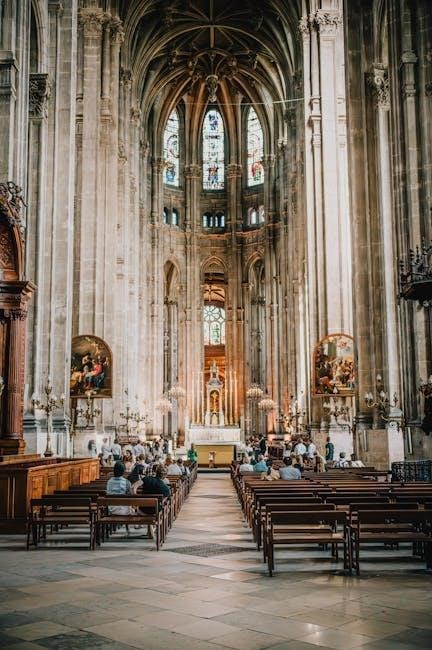
Ancient Art (c. 3000 BCE – 500 CE)
Ancient art encompasses diverse civilizations, from Mesopotamia to Rome, characterized by early artistic techniques, symbolism, and religious themes. This period laid the groundwork for future artistic movements.
Egyptian Art and Its Cultural Impact
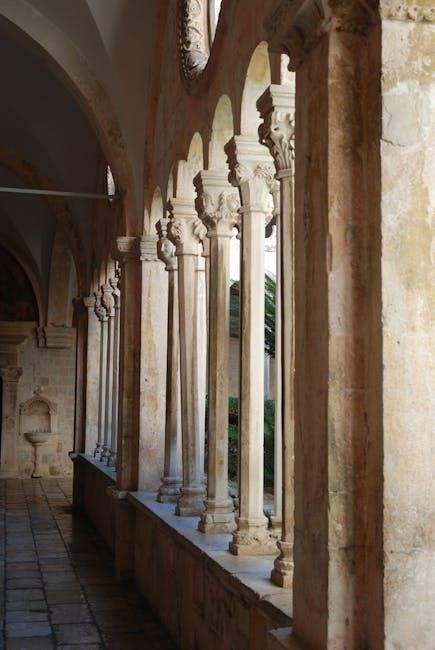
Egyptian art, flourishing from c. 3000 BCE to 300 CE, is renowned for its monumental architecture, symbolic imagery, and religious themes. It was deeply tied to spirituality and immortality, often depicting pharaohs and deities. The Great Pyramids, the Great Sphinx, and tomb paintings exemplify its grandeur and precision. Hieroglyphics, a unique writing system, were integral to art, conveying narratives and rituals. Egyptian art’s rigid styles and proportions emphasized harmony and timelessness. Its influence extended beyond Egypt, shaping Mediterranean cultures and inspiring later civilizations. The discovery of Tutankhamun’s tomb in 1922 revived global fascination, highlighting its enduring cultural impact. Egyptian art remains a cornerstone of art history, illustrating the intersection of aesthetics, religion, and power in ancient societies.
Greek and Roman Art: Evolution and Legacy

Greek art (c. 800 BCE – 300 CE) emphasized harmony, proportion, and idealism, reflecting classical ideals. The Archaic period introduced rigid forms like kouroi, while the Classical period saw naturalism and balance, exemplified by the Parthenon. The Hellenistic era brought drama and emotion, as seen in dynamic sculptures like Laocoön and His Sons. Roman art (c. 509 BCE – 500 CE) adapted Greek styles but focused on realism, portraiture, and monumental architecture, such as the Pantheon. It often served political purposes, glorifying emperors and their achievements. The legacy of Greek and Roman art lies in its influence on Renaissance and Neoclassical movements, revitalizing interest in classical forms and ideals. Their art remains a foundational pillar of Western cultural heritage, showcasing the enduring appeal of ancient aesthetic and philosophical principles.
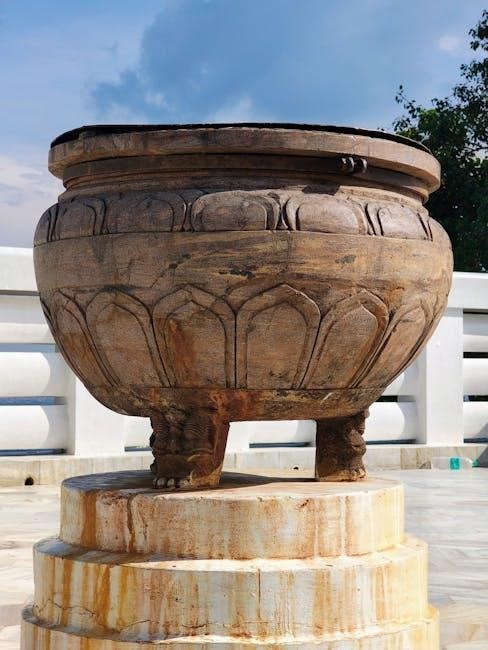
Medieval Art (c. 500 – 1400 CE)
Medieval Art (c. 500–1400 CE) was primarily religious, with techniques like illuminated manuscripts and mosaics serving religious and political purposes. Iconography was symbolic, and regional styles varied widely.
Early Christian and Byzantine Art
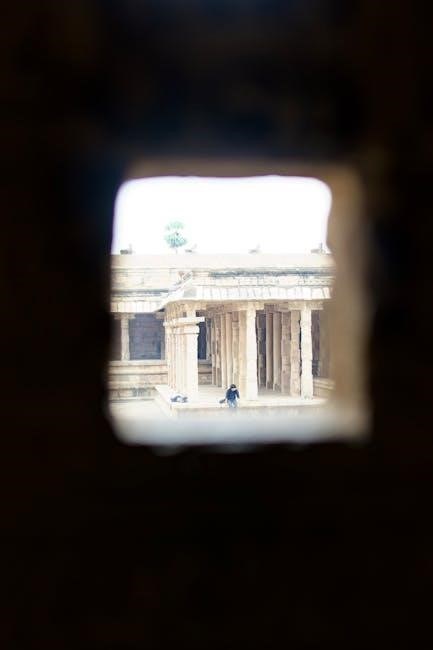
Early Christian art (c. 260–525 CE) was modest and symbolic, often hidden in catacombs, featuring images like the ichthys (fish) and chi-rho (Christ’s monogram). With Emperor Constantine’s legalization of Christianity, art shifted to public spaces, including basilicas like St. Peter’s in Rome.
Byzantine art (c. 527–1453 CE) emerged under the Byzantine Empire, characterized by mosaics, gold backgrounds, and religious icons. It emphasized spiritual themes, with formalized compositions and elongated figures. The use of light and color created a divine atmosphere, as seen in the mosaics of Hagia Sophia and the Chora Church; Byzantine art influenced early medieval European styles and remains a cornerstone of religious art history, reflecting the blending of Roman techniques with Eastern aesthetics. Its legacy endures in iconography and church design, making it a pivotal period in the evolution of artistic expression tied to faith and culture.
Romanesque and Gothic Architecture
Romanesque architecture (c. 10th–12th centuries) emphasized sturdy structures with rounded arches, barrel vaults, and squat pillars. It relied on stone and thick walls for durability, often incorporating fortification elements. Churches like Speyer Cathedral exemplify this style, with a focus on functionality and simplicity. The use of cruciform plans and ribbed vaults marked early innovations in engineering.
Gothic architecture (c. 12th–14th centuries) revolutionized design with pointed arches, ribbed vaults, and flying buttresses. These advancements allowed for taller, lighter buildings with stained glass windows, such as Notre-Dame de Paris and Chartres Cathedral. Gothic style emphasized verticality and light, symbolizing a spiritual connection to the divine. It blended engineering prowess with artistic elegance, leaving a lasting legacy in European architecture and art history.
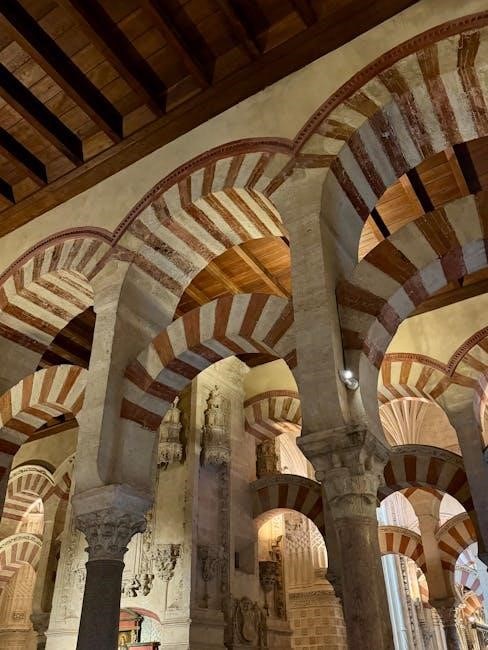
Renaissance Art (c. 1400 – 1600 CE)
Renaissance art marked a cultural and artistic revival, blending classical influences with humanist ideals. It emphasized realism, perspective, and anatomy, transforming European art and culture profoundly.
This period saw the rise of patrons like the Medici, fostering creativity and innovation. Artists explored secular themes alongside religious subjects, laying the foundation for modern artistic expression.
Characteristics of Renaissance Art
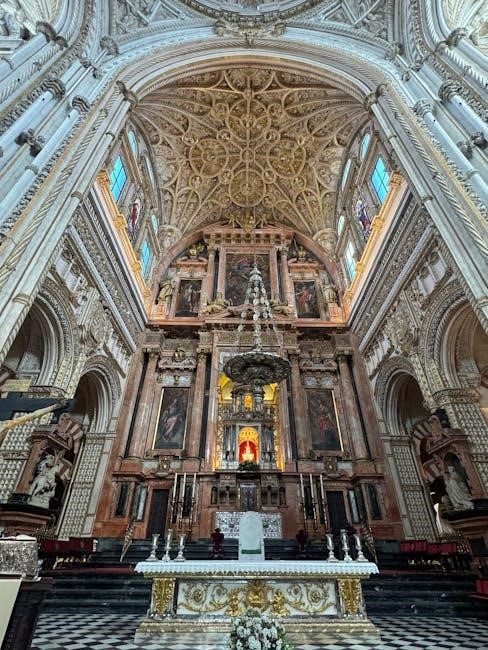
Renaissance art is defined by its focus on realism, humanism, and classical influences. Artists revived ancient Greek and Roman styles, emphasizing proportion, balance, and harmony.
- Realism and detail: Artists like Leonardo da Vinci and Michelangelo perfected anatomical accuracy and lifelike depictions.
- Linear perspective: Techniques like sfumato and chiaroscuro created depth and dimension, revolutionizing art.
- Humanism: Art celebrated human potential, emotion, and individualism, shifting from religious to secular themes.
- Classical revival: Inspiration from ancient art and philosophy shaped themes and techniques.
- Symmetry and balance: Compositions often featured harmonious arrangements and geometric precision.
- Patronage: Wealthy families like the Medici supported artists, fostering innovation and creativity.
These characteristics collectively transformed art, laying the groundwork for future movements and cementing the Renaissance as a pivotal era in art history.
Notable Artists and Their Contributions
The Renaissance era saw the rise of iconic artists who revolutionized art. Leonardo da Vinci, known for his masterpieces like the Mona Lisa and The Last Supper, pioneered techniques like sfumato and chiaroscuro. Michelangelo, a sculptor and painter, created the ceiling of the Sistine Chapel and David, embodying perfection in anatomy and composition. Raphael, celebrated for his harmonious and balanced works, painted The School of Athens, capturing the essence of humanism; These artists, along with others like Sandro Botticelli and Titian, explored realism, emotion, and classical ideals, leaving lasting legacies in art history.
- Leonardo da Vinci: Mastery of light and shadow, anatomical precision.
- Michelangelo: Sculptural brilliance and divine imagery.
- Raphael: Elegant compositions and harmonious designs.
Their contributions defined the Renaissance, blending creativity with intellectual depth.
Baroque and Rococo Art (c. 1600 – 1780 CE)
Baroque art emphasized dramatic intensity and grandeur, while Rococo embraced delicate elegance and lighthearted themes, reflecting cultural shifts and social influences of their era.
Baroque Art: Drama and Movement
Baroque art, flourishing from 1600 to 1750, was characterized by dramatic intensity, dynamic movement, and emotional depth. It often featured strong contrasts of light and shadow, known as chiaroscuro, to create a sense of tension and drama. Sculptures and paintings depicted dramatic scenes from religious, mythological, or historical narratives, with exaggerated poses and facial expressions. Architects like Bernini and Borromini designed grand, sweeping structures with elaborate ornaments, reflecting the power of the Catholic Church during the Counter-Reformation. Notable artists such as Caravaggio and Rembrandt pioneered this style, with Caravaggio’s vivid use of light and shadow setting the tone for the period. The Baroque style was both a reflection of the cultural and religious upheavals of the time and a celebration of human emotion and grandeur.
Rococo Art: Lightness and Elegance
Rococo art, emerging in the early 18th century, emphasized lightness, elegance, and playful themes. It contrasted with the dramatic intensity of Baroque art, focusing instead on delicate curves, pastel colors, and ornate decorations. Often depicting scenes of romance, nature, and everyday life, Rococo art celebrated joy and frivolity. Artists like Jean-Honoré Fragonard and François Boucher popularized this style, which frequently adorned interiors of palaces and aristocratic homes. The use of gilded mirrors, intricate wallpaper, and asymmetrical designs reflected the era’s love for luxury and whimsy. Rococo art also emphasized secular and domestic themes, marking a shift from the religious focus of earlier periods. Its lighthearted and intimate approach captivated European society, particularly in France, before giving way to the Neoclassical movement’s more austere ideals.
Neoclassicism and Romanticism (c. 1780 – 1850 CE)
Neoclassicism emphasized reason and classical ideals, while Romanticism explored emotion, nature, and individualism. This period marked a shift from rigid structures to expressive, imaginative art forms.
Neoclassicism: Revival of Classical Styles
Neoclassicism emerged in the late 18th century as a revival of classical Greek and Roman art and architecture. It was deeply influenced by Enlightenment ideals, emphasizing reason, order, and moral virtue. This movement rejected the ornate and dramatic styles of the Baroque and Rococo periods, opting instead for simplicity, symmetry, and clarity. Artists like Jacques-Louis David pioneered Neoclassicism, creating works that reflected ancient ideals of heroism and civic duty. Sculptors such as Antonio Canova also embraced this style, producing marble works reminiscent of classical antiquity. Neoclassicism not only influenced art but also architecture, with buildings designed to mirror ancient temples and public spaces. The movement served as a cultural and political tool, often aligning with revolutionary and nationalist sentiments across Europe. It laid the groundwork for academic art traditions and remains a significant chapter in the history of art.
Romanticism: Emotion and Individualism
Romanticism, emerging in the late 18th century, emphasized emotion, nature, and individualism, contrasting with the rationality of Neoclassicism. It celebrated the sublime, the irrational, and the supernatural, often drawing inspiration from landscapes, folklore, and personal experiences. Artists like Caspar David Friedrich and Eugène Delacroix explored dramatic lighting, vivid colors, and emotional intensity. The movement also embraced nationalism, with artists expressing pride in their cultural heritage. Romanticism valued the unique perspective of the artist, fostering a sense of originality and creativity. It influenced not only visual arts but also literature and music, creating a holistic cultural shift. By prioritizing emotion over form, Romanticism laid the groundwork for later art movements that celebrated personal expression and the power of the human spirit. Its legacy endures as a celebration of diversity and the boundless potential of imagination;
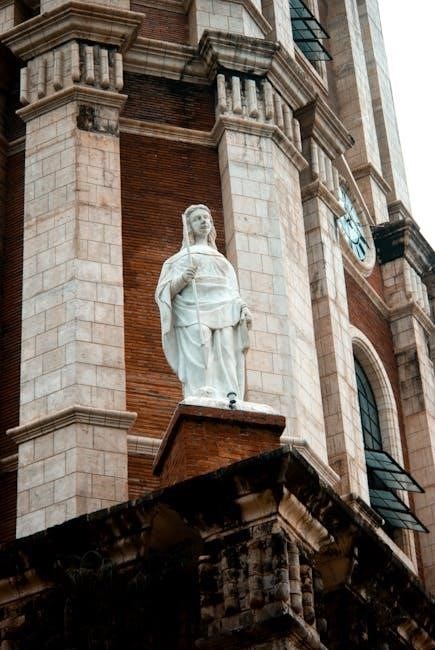
Impressionism and Post-Impressionism (c. 1850 – 1900 CE)
Impressionism focused on capturing light and color, while Post-Impressionism emphasized distorted forms and emotional expression, paving the way for modern art’s experimentation and innovation.
Impressionist Movement: Capturing Light and Color
The Impressionist movement emerged in France during the late 19th century, emphasizing the capture of light and color in outdoor settings. Artists like Claude Monet, Pierre-Auguste Renoir, and Edgar Degas pioneered this style, focusing on fleeting moments and modern life. They rejected traditional approaches to realism and historical themes, instead opting for vibrant, unblended colors and short, broken brushstrokes. This technique created a sense of movement and immediacy, often blurring details in favor of capturing the play of light. The Impressionists’ innovative approach was initially met with criticism but later gained acclaim, revolutionizing art by prioritizing optical effects over precise representation. Their work laid the foundation for a wide range of modern art movements, celebrating the beauty of everyday scenes and the transient qualities of natural light.
Post-Impressionism: Breaking Artistic Boundaries
Post-Impressionism emerged in the late 19th century as a response to Impressionism, pushing artistic boundaries by emphasizing emotional expression and distorted forms. Artists like Vincent van Gogh, Paul Gauguin, and Paul Cézanne rejected Impressionism’s focus on light and realism, instead exploring bold, vibrant colors and abstracted shapes. Van Gogh’s swirling landscapes and Gauguin’s symbolic compositions exemplified this shift, prioritizing inner feelings over objective representation. Cézanne’s structured approach laid the groundwork for Cubism. Post-Impressionism sought to evoke deeper psychological and spiritual experiences, often drawing inspiration from non-Western art and folk traditions. This movement bridged the gap between Impressionism and modern art, fostering a diverse range of avant-garde styles like Fauvism and Expressionism. Its innovative spirit and emphasis on individual expression continue to influence contemporary art, making it a pivotal chapter in the history of art.
Modern Art (c. 1900 – 1950 CE)
Modern Art transformed visual expression, emphasizing experimentation and abstraction. Movements like Fauvism, Cubism, Surrealism, and Abstract Expressionism emerged, reshaping perceptions of form and reality. Artists like Picasso, Matisse, Dalí, and Pollock pioneered groundbreaking techniques, pushing boundaries of traditional art. This period marked a radical shift, exploring new ways to represent the world, leading to diverse avant-garde movements that continue to influence contemporary art. The era’s focus on innovation and individualism laid the foundation for the dynamic evolution of modern and contemporary art.
Key Movements in Modern Art
Modern Art witnessed the rise of groundbreaking movements that challenged traditional techniques and aesthetics. Fauvism, led by Henri Matisse, emphasized vibrant, non-naturalistic colors. Cubism, pioneered by Pablo Picasso and Georges Braque, fragmented objects into geometric forms. Futurism celebrated dynamism and motion, while Surrealism explored the subconscious through fantastical imagery. Abstract Expressionism emerged in the 1940s, focusing on emotional expression through gestural brushstrokes, as seen in the works of Jackson Pollock. Dadaism rejected convention, embracing chaos and irreverence. The Bauhaus movement sought to unify art and design, influencing architecture and industrial design. Minimalism simplified forms to their essence, while Pop Art reflected modern consumer culture. These movements collectively revolutionized art, pushing boundaries and redefining creative expression.
Influential Modern Artists and Their Works
Modern Art saw the emergence of visionary artists who reshaped creative boundaries. Pablo Picasso, a pioneer of Cubism, created seminal works like Guernica and Les Demoiselles d’Avignon. Henri Matisse, known for Fauvism, produced vibrant pieces such as The Dance and Blue Nude. Salvador Dalí, a leading Surrealist, captivated audiences with The Persistence of Memory and The Elephants. Frida Kahlo’s self-portraits, like The Two Fridas, offered intimate glimpses into her life and identity. Jackson Pollock, a key figure in Abstract Expressionism, revolutionized art with his drip paintings, including No. 5, 1948. These artists, among others, left indelible marks on modern art, pushing the boundaries of technique, style, and emotional expression, and their works remain iconic in the history of art.
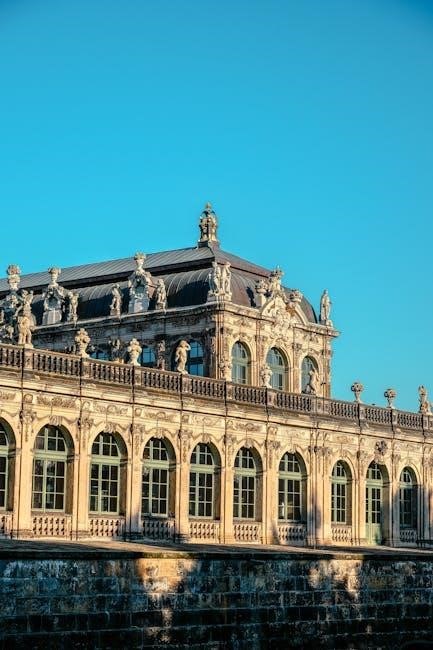
Contemporary Art (c. 1950 CE – Present)
Contemporary Art spans from 1950 to today, encompassing movements like Pop Art, Minimalism, and Conceptual Art. Artists such as Andy Warhol, Jeff Koons, and Yayoi Kusama have redefined creativity, blending diverse media and challenging traditional norms. The era emphasizes innovation, global perspectives, and the integration of technology, reflecting society’s dynamic evolution.
Evolution of Contemporary Art
Contemporary Art has evolved significantly since 1950, reflecting cultural, social, and technological advancements. The 1980s saw the rise of Neo-Expressionism and the dawn of digital art. By the 1990s, installation and performance art gained prominence, pushing boundaries of traditional mediums. In the 2000s, globalization influenced art, with artists from Asia, Africa, and the Middle East gaining international recognition. Today, contemporary art embraces diversity, blending digital media, virtual reality, and sustainable practices. It challenges norms, explores identity, and addresses global issues like climate change. The evolution of contemporary art highlights its dynamic nature, constantly redefining creativity and engaging audiences in new ways. This period underscores art’s role in reflecting and shaping society, making it a vital part of cultural discourse.
Globalization and Its Impact on Art
Globalization has profoundly influenced contemporary art by breaking cultural and geographical barriers. It has enabled artists from diverse backgrounds to share their work on a global stage, fostering cross-cultural exchange and collaboration. The rise of international art fairs, biennales, and digital platforms has created opportunities for artists to gain global recognition. Globalization has also led to the blending of artistic styles, with traditional techniques merging with modern influences. However, it has raised concerns about cultural homogenization and the loss of local identities. Despite these challenges, globalization has expanded the art market, making it more inclusive and diverse. It has also inspired artists to address global issues, such as migration, environmentalism, and social justice, through their work. This interconnectedness has redefined the role of art in reflecting and shaping global culture.
The history of art timeline reveals humanity’s evolving creativity and cultural expression, reflecting societal values and technological advancements across millennia, shaping our understanding of global identity and heritage.
The history of art is divided into distinct periods, each reflecting the cultural, social, and technological advancements of its time. From the cave paintings of Prehistoric Art to the innovative works of Contemporary Art, each era offers unique insights into human creativity and expression. Ancient Art, spanning civilizations like Egypt and Rome, laid the groundwork for artistic techniques and symbolic representation. The Middle Ages brought religious art and architectural marvels, while the Renaissance revived classical ideals and emphasized humanism. Baroque and Rococo introduced dramatic and ornate styles, followed by Neoclassicism and Romanticism, which explored opposing ideals of order and emotion. Impressionism and Post-Impressionism revolutionized perceptions of light and color, leading to the experimental approaches of Modern and Contemporary Art; Together, these periods create a rich tapestry of artistic evolution.
The Importance of Art History in Understanding Culture
Art history serves as a mirror to culture, reflecting the values, beliefs, and identities of societies across time. By studying the evolution of art, we gain insights into historical events, religious practices, and technological advancements that shaped human civilization. Artistic styles often emerge as responses to cultural shifts, making them powerful tools for understanding societal norms and transformations. The study of art history fosters empathy and appreciation for diverse cultures, bridging gaps between past and present. It also encourages critical thinking about how art influences and is influenced by its context. Ultimately, art history is a cornerstone for comprehending the complexities of human culture, offering a visual and emotional connection to our shared heritage.